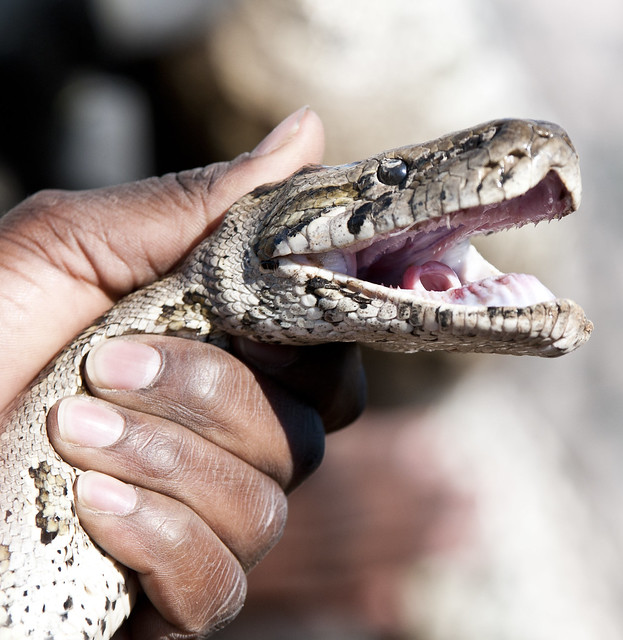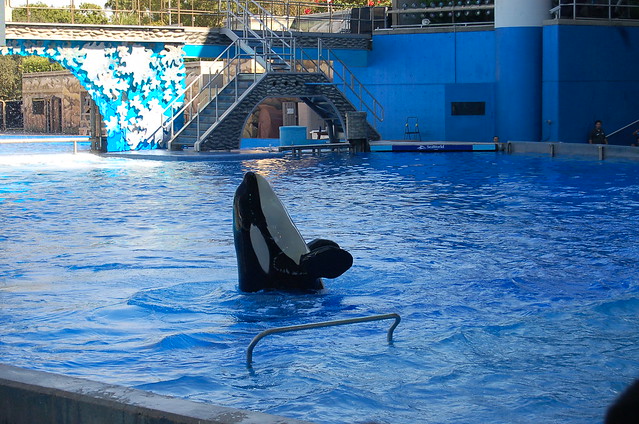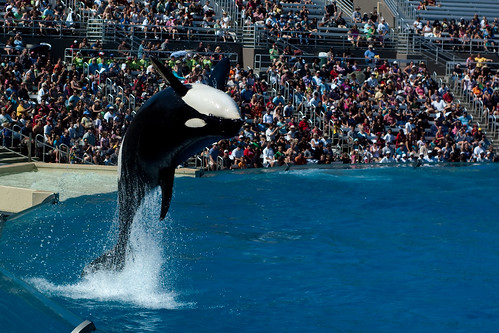It is the stuff of nightmares. A 100-pound, 14 foot African
rock python, which was being kept as a house pet
 |
| US Army Africa CC BY 2.0 Via Flickr |
The boys (4 and 6 years old), whom were sleeping over at the home of a friend, died of constriction, however the necropsy reports for both the kids and the snake (to see what may have been a factor in the attack) *haven’t come back yet at this time. The snake, which the owner has possessed for at least 10 years, was euthanized after the tragedy.
Many snake experts are scratching their heads. It is entirely abnormal for a large snake to subdue not one, but two oversized ‘prey items’.
*Autopsy report
“It’s ridiculous. I can’t believe this is real.” said Reptile Ocean Inc. owner Jean-Claude Savoie.
Pictures of the boys
cleaning the snake cage
For some reason, the media has decided to sensationalize a “shocking
photo” of the young victims cleaning the cage of the snake that killed them
prior to the incident. The snake appears to not be present in the picture. Why
is this shocking?
Like shows such as Animal Planet’s Fatal Attractions
(I’m sure their people are calling around trying to get people to talk to about
this incident already), the object is to present this story as some inevitable
tail of horror due to negligent, crazed exotic pet owners. As for whether or
not the owner should be held accountable is still pending, but it is easy to
forget the thousands of large snake owners who’ve had no problems nor will then
in the future.
How did this happen?
There are many possible explanations being given from
various reptile behaviorists. We know that snakes only constrict for food and
not self-defense, therefore it is presumed that the animal must have been
hungry. However, one herpetologist proposed that the snake may have been
spooked from the fall and clung onto whatever it fell on. Others suggest that
since the boys had spent time around prey animals at a family farm, the snake
may have abnormally mistaken them for food. Fatalities from large constrictor
snakes have occurred in the past, but are rare.
Deaths from captive
pythons
No matter which way you spin it, death by captive constrictor snakes, despite their widespread popularity
as pets, are not common by any means. However, the exotic pet community suffers
greatly even when these isolated incidents occur no more than once annually, compared to around 30 fatal
incidents from domesticated dogs (and immeasurable injuries) alone.
Rexano has
graciously listed every single fatality
from these animals within the years of 1990 to 2012. Only 10 people have
been killed by pet snakes during this time frame. In addition, ZERO of these fatalities
occurred to members of the public that were not involved with the
snake in question (translation: you will not be killed in your sleep by someone
else’s choice of pet).
The incident in Canada was no exception, as the boys’ guardians
allowed contact and accepted these very small risks. Negligence certainly also
plays a role in large snake fatalities, because these incidents, as the statistics
show, are entirely preventable and not likely to occur from the start. Big snakes
like these however should never be given the opportunity to escape.
Ban large pythons as
pets?
Once again the exotic pet community is faced with ‘weird death syndrome’, which I’ve
outlined in this
article. People are not concerned with death alone, but fatalities associated
with practices that confuse, bother, or outrage them. It is already very easy
to be offended by the ownership of snakes—I’ve milled through comment after exclaiming
“WHY
DO PEOPLE NEED TO OWN THESE THINGS!? “ from snake-o-phobes and
borderline animal rights activists alike. Snakes, next to spiders, are probably
one of the most (irrationally) feared animals and most people don’t even like
to look at them, save own one. But many people are fascinated by snakes as others are with puppies.
While said puppies grow up to become members of a species that have killed more people, owners of snakes do not get reptiles because they want a pet that will cuddle with them and play fetch, but a unique, interesting (not to mention, low maintenance) pet they can simply marvel at. Pythons thrive and have sufficient well-being in captivity.
The Humane Society of
the United States is a prominent animal rights organization that uses ever
rare incident that occurs in North America to try and shut down any part of the
pet trade it can. Here is their newest
effort.
This comes as no surprise to anyone who is familiar with the philosophy
of this organization. They have no interest in public safety, but use it to
support their goal of animal liberation. Regardless, tragedies like what occurred
in Canada are undeniably, utterly rare.

